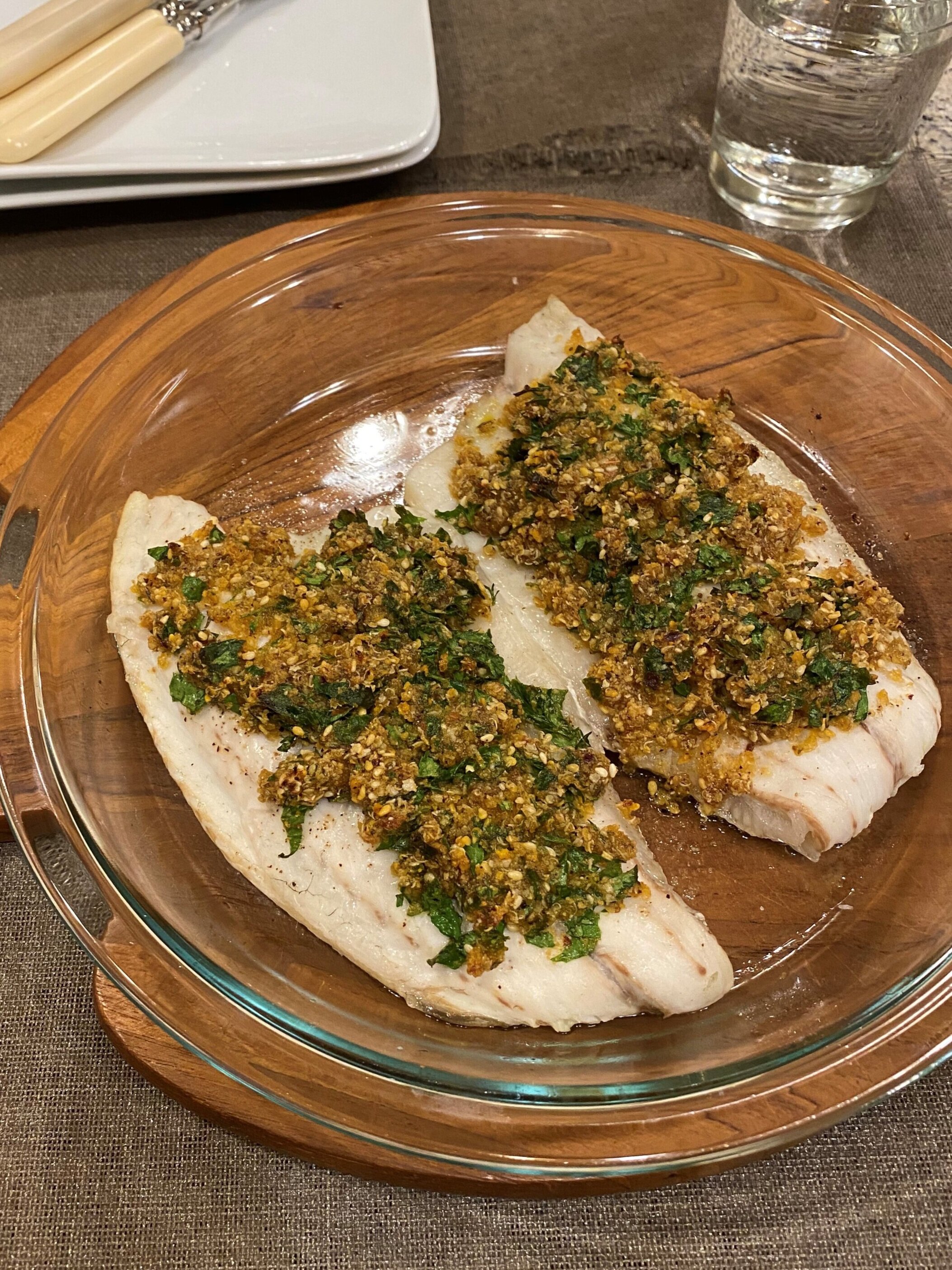Makes 4 servings.
Dukkah and Amaranth are a new spice and grain I recently discovered. Dukkah is a blend of nuts, seeds and herbs. Amaranth is similar to quinoa. It is gluten free, high in protein, fiber and minerals. I like the flavor and the crunchy texture.
I serve this dish, at room temperature, as a salad with slices of cucumber and radish on the side. Sometimes I divide the fillets into 2 pieces just for the look.
Please do not be deterred by all the information. The recipe is quite simple. The dressing can be used on other salads, and if you read the recipe carefully before you begin, you will realize that it is simple.
INGREDIENTS:
- 4 ounces baby kale, stems discarded or other greens, placed into a bowl and refrigerate, uncovered, until ready to use (See Note).
- Radishes, sliced
- Cucumber, sliced
DRESSING FOR GREENS:
- 1 small jalapeno (See Note)
- 1 clove garlic
- 1 teaspoon kosher salt.
- 3 tablespoons extra-virgin olive oil
- 3 tablespoons lime juice.
- Freshly ground black pepper
PREPARATION OF DRESSING:
- Cut the jalapeno in half horizontally discard the seeds and slice very thinly.
- Coarsely chop the garlic on a cutting board. Sprinkle with kosher salt and using the blade of a knife, crush the garlic into a paste.
- Whisk all the ingredients and set aside.
COATING FOR THE FISH:
- ¾ cup Amaranth, popped (See Note)
- 2 tablespoons Dukkah
- ½ teaspoon kosher salt
- Freshly ground black pepper
- 2 large egg whites, whisked
- 4 skinless center cut wild salmon fillets, about 6 ounces each
- 3-4 tablespoons extra-virgin olive oil.
PREPARATION OF FISH:
- Combine very well the coating ingredients in a zip lock baggie (dukkah is quite salty, so it is important to combine it well) and spread it on wax paper.
- Heat the oil over high heat in a large non-stick skillet.
- Pat fillets dry, dip in the egg white and then press well into the coating.
- Sauté the salmon on high/medium heat for about 2 minutes on each side, or to your taste. I like mine medium rare. Remove fish to a platter lined with paper towel to stop the cooking and to absorb the oil.
To SERVE:
Toss the kale or the greens with the dressing. Place on individual plates, top with the fish and place radishes and cucumbers on the side.
NOTES:
It is best to refrigerate greens uncovered until they are ready to be dressed.
When seeding jalapeno peppers, I advise wearing plastic gloves to avoid irritating your skin or your eyes.
Amaranth is a whole grain which requires popping. That can be made at any time and stored to have on hand.
DIRECTIONS FOR POPPING AMARaNTH:
- Heat a small/medium non-stick skillet over high heat. Test if skillet is hot enough by adding a drop of water. Once hot, sprinkle a thin layer of amaranth on the skillet and keep on shaking it back and forth. The amaranth will begin to pop, so it is best to cover it.
- Adjust the heat so that the amaranth does not burn. It will get light brown.
- Empty into a bowl as you do the next batch.
































